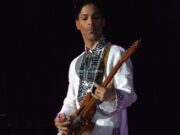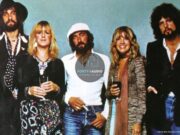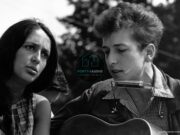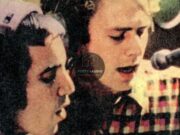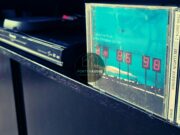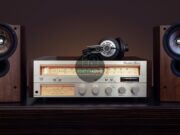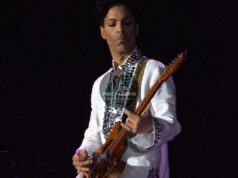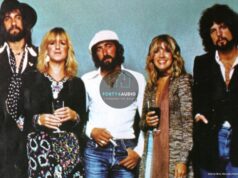Unpacking the Vocal Range and Stage Presence of a Legend
Freddie Mercury remains one of the most electrifying figures in music history. His voice could soar like an aria and growl like a rock anthem. His stage presence was magnetic, theatrical, and utterly fearless. But beyond the glitter and grandeur was a deeply skilled musician whose vocal range, operatic technique, and emotional intelligence shaped the sound of Queen – and redefined what it meant to be a frontman.
This is a closer look at the genius of Freddie Mercury: the voice, the persona, the legacy.
Freddie Mercury‘s Early Life and the Birth of Queen
Born Farrokh Bulsara in Zanzibar in 1946, Mercury spent much of his youth in India, where he began piano lessons at age seven. He was exposed to a wide range of musical traditions, from Indian classical to British pop, and his early education at St. Peter’s School in Panchgani introduced him to Western rock and roll. By the time he moved to England in the 1960s, Mercury had already developed a fascination with performance and identity.
In 1970, he joined forces with guitarist Brian May, drummer Roger Taylor, and later bassist John Deacon to form Queen. The band’s name, chosen by Mercury, reflected his flair for the dramatic and his desire to challenge norms. He also designed the band’s crest, blending astrological signs into a regal emblem – an early sign of his attention to detail and symbolism.
Freddie Mercury’s Vocal Range and Operatic Technique
Freddie Mercury’s Vocal Range Explained
Freddie Mercury’s vocal range is often cited as spanning nearly four octaves – from a low F2 to a high F6. While he wasn’t a trained opera singer in the traditional sense, his technique was remarkably sophisticated. He could shift from a gritty rock growl to a delicate falsetto with ease, often within the same phrase.
Songs like Somebody to Love showcase his gospel-inspired layering and control, while Bohemian Rhapsody is a masterclass in vocal dynamics. Mercury’s vibrato was fast and expressive, and his phrasing often mimicked the drama of operatic arias.
The Influence of Opera and Classical Music
Mercury’s love for opera wasn’t just aesthetic – it was foundational. He admired soprano Montserrat Caballé, with whom he recorded the 1988 album Barcelona. The title track is a soaring duet that blends rock instrumentation with classical vocal technique, and it remains one of the most ambitious cross-genre collaborations in pop history.
Even in Queen’s rock catalog, operatic elements abound. The Prophet’s Song and Innuendo feature complex vocal arrangements and theatrical storytelling, while It’s a Hard Life borrows directly from Leoncavallo’s Pagliacci.
Freddie Mercury’s Stage Presence and Live Performances
How Freddie Mercury Commanded Massive Audiences
Freddie Mercury didn’t just perform – he inhabited the stage. Whether in a sequined catsuit or a military-style jacket, he moved with purpose and charisma. His ability to connect with audiences was legendary, and nowhere was this more evident than at Live Aid in 1985.
In just 20 minutes, Mercury turned Wembley Stadium into his personal theater. His Ay-Oh vocal improvisation with the crowd has become a textbook example of audience engagement. It wasn’t rehearsed. It wasn’t scripted. It was instinctual.
The Evolution of His Stage Persona
In the early 1970s, Mercury embraced glam rock’s androgyny – tight leotards, painted nails, and theatrical makeup. By the 1980s, his look had evolved into something more muscular and assertive: short hair, leather, and the now-iconic mustache. This transformation reflected both personal growth and a shifting cultural landscape.
Yet through every era, Mercury’s confidence never wavered. He once said, I’m not going to be a rock star. I’m going to be a legend. And he meant it.
Queen’s Discography and Freddie Mercury’s Solo Work
Essential Queen Albums Featuring Freddie Mercury
- A Night at the Opera (1975)
This album cemented Queen’s place in rock history. Bohemian Rhapsody broke every rule of radio formatting and became a global phenomenon. Love of My Life revealed Mercury’s tender side, often performed acoustically in concert. - News of the World (1977)
Home to We Will Rock You and We Are the Champions, this album showcased Queen’s ability to write anthems that transcended genre. Mercury’s vocals on My Melancholy Blues are particularly nuanced and jazzy. - The Game (1980)
With hits like Another One Bites the Dust and Crazy Little Thing Called Love, this album marked Queen’s embrace of funk and rockabilly. Mercury’s versatility shines throughout. - Innuendo (1991)
Recorded while Mercury was gravely ill, this album is a testament to his resilience. Tracks like The Show Must Go On and These Are the Days of Our Lives are emotionally charged and vocally powerful.
Freddie Mercury’s Solo Projects
- Mr. Bad Guy (1985)
A synth-heavy album that allowed Mercury to explore dance-pop and ballads outside of Queen’s framework. Living on My Own became a posthumous hit in the 1990s. - Barcelona (1988)
A collaboration with Montserrat Caballé that fused opera and pop in unprecedented ways. The title track was later used as an anthem for the 1992 Barcelona Olympics.
Freddie Mercury’s Cultural Impact and Legacy
A Queer Icon and Symbol of Self-Expression
Freddie Mercury’s sexuality was complex and often private, but his presence on stage was unapologetically bold. In an era when LGBTQ+ representation in mainstream music was rare, Mercury’s flamboyance and confidence offered a form of visibility that resonated deeply with fans.
His death from AIDS-related complications in 1991 brought global attention to the epidemic and helped destigmatize conversations around the disease. The Freddie Mercury Tribute Concert in 1992 raised millions for AIDS research and featured performances by Elton John, David Bowie, and George Michael.
Influence on Modern Artists
Mercury’s influence can be heard in the work of artists like Lady Gaga (who took her name from Queen’s Radio Ga Ga), Adam Lambert (who now tours with Queen), and Brendon Urie of Panic! At The Disco. His theatricality, vocal agility, and genre-defying approach continue to inspire musicians across generations.
Rare and Lesser-Known Facts About Freddie Mercury
- He was a trained visual artist.
Mercury earned a diploma in graphic design from Ealing Art College and designed Queen’s crest himself. - He recorded vocals while terminally ill.
During the making of Innuendo, Mercury insisted on recording as much as possible, even when he could barely stand. Brian May recalled him saying, I’ll keep singing until I bloody well drop. - He loved cats.
Mercury had several cats throughout his life and even dedicated his solo album Mr. Bad Guy to them. - There’s an asteroid named after him.
In 2016, the International Astronomical Union named asteroid 17473 Freddiemercury in his honor.
Keep the Music Playing with forty4 Audio
Freddie Mercury‘s voice was more than a sound – it was a force. His performances weren’t just concerts – they were experiences. And his legacy isn’t frozen in time – it’s alive in every note that dares to be bold, theatrical, and true.
At forty4 Audio, we celebrate artists who push boundaries and listeners who crave more than background noise. Whether you’re rediscovering Queen on vinyl or exploring Mercury’s solo catalog through high-fidelity streaming, we’re here to amplify your journey.
Join the forty4 Audio community and keep the spirit of sonic brilliance alive – one track, one story, one legend at a time.


